It’s like this… An astronaut asks if you want to spend the day at work with him. You say, “Yes.”
More specifically, it was like this. Kjell Lindgren, a NASA astronaut who spent 142 days in space, was a consultant when I was writing The Calculating Stars and The Fated Sky. So by “Would you like to spend the day with me at work?” what he meant was “Do you want to come to the NBL and watch a full dev run?”
Now, if you’re like me, you say, “Yes.”
Let me explain. He invited me to go to the Neutral Buoyancy Laboratory, which is a swimming pool the size of a football field and three stories deep, containing a full-scale replica of the International Space Station. A “dev run” is a developmental run of a spacewalk—basically, they simulate a spacewalk in 6.2 million gallons of water.
Buy the Book
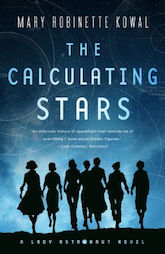

The Calculating Stars
But what he actually said was, “Do you want to watch me do a dev run at the NBL? But you probably won’t want to stay for the whole day because it will be really boring.”
To which, my basic response was, “Hey Kjell… Know how I’m a professional puppeteer? If you’re in NYC and want to visit Sesame Street, let me know. but you probably won’t want to stay for the whole day because it will be really boring.”
He acknowledged that I had a point.
We met at 6:30 am because a day at the NBL starts super-early. He needs to be ready for his physical at 7:30 am. Yes. They have to get checked out by a doctor before beginning a simulated spacewalk. Even so, when we arrived at the NBL, there was someone swimming laps in the pool above the mock-ISS. This is, apparently, one of the perks of working at the NBL. You get to swim in a massive, massive pool.
Until he went underwater, Kjell let me shadow him at poolside and during the mission briefing. I took six pages of hand-written notes and 3000 words of typed notes. Here are the Top Five Really Cool Things I Learned at the NBL.
1. The Mini-WorkStation, which had been described to me as being kinda like a toolbox, is not a box. It is a metal bar that is strapped to the astronaut’s chest and contains the things they think they’ll need on the spacewalk. It’s the jumble of random metal and tyvek to the left of the photo. Each astronaut sets the MWS the way they want it, which is what Kjell is doing in this photo. He’s holding a RET—retractable equipment tether.
2. Wire-ties. These are long brass pieces of wire with a loop at the end to make them easier to grab and use. There are short “US” wireties and long “Russian” wireties.
Funny story about their development. The Russians were at the NBL for some training and saw the twist ties on bread bags. Apparently, they twisted and untwisted them with great interest.
“These are useful!” they proclaimed. And then they went back to Star City to make larger brass versions of the same thing.
NASA saw them on the ISS and said “These are useful” and now they make them too. So… wire ties. Super-high-tech.
And the reason to not use a zip-tie in space? You have to use a blade to release them and they avoid anything sharp on a spacewalk because of the danger of a suit puncture.
By the way, the image here of the wire ties? I’d hadn’t gotten a good shot of one by itself while I was at the NBL, so I asked Kjell if he could take a photo next time he was there. He didn’t wait, because he had some at home. That he’d used on a spacewalk. As you do. No big deal.
3. The LTA or Lower Torso Assembly—AKA space pants. I had been told, before arriving, that astronauts do not, in fact, put their pants on like everyone else. This is true. If you look carefully in this photo, on the pool deck on either side, are two white mats with space pants on them. What happens is that the astronauts walk out in their Liquid Cooling and Ventilation Garment, which basically looks like long underwear with aquarium tubing sewn into it. The LCVG is designed to keep them cool inside the space suit. One of the things that’s tricky is that the suit is tight and lined with rubber which basically grabs the fabric of the LCVG.
So, they sit down on the pool deck and wriggle into the LTA with two highly trained technicians bracing it. It is like the least sexy floor dance in the world.
4. The EMU (EVA Mobility Unit or Extra-vehicular-activity Mobility Unit because NASA loves an acronym inside an acronym) weighs about 350 pounds. Walking in it is … challenging. So the astronauts put on their space pants and then clomp over to the donning stand which holds the upper part of the suit. After the technicians check them out to make sure that the suit is fully sealed, they use a crane to lower them into the pool. (Check out the video here.) My favorite bit of this is when Kjell splashes the kids as he goes under.
5. There are sometimes children of NASA employees at a dev run. Why would you bring a child to something advertised as “boring?” Because there are only a few times when an astronaut puts on the full EMU while on Earth: when they are are taking their official photo and at the NBL. So if you want to see an astronaut really and truly looking like an astronaut, the NBL is your opportunity. Please note that even adults will grin like an idiot and stand next to an astronaut to have their photo taken.
Apparently, one of the most common questions that children ask is, “How do you go to the bathroom?”
The answer is…
MAGs. Maximum Absorbency Garments. Which are tooooooootally not diapers. Definitely not. Definitely.
Definitely diapers. BUT thanks to modern improvements, they are pull-ups now. In fact … you can thank NASA for a lot of modern diaper technology. Although, again, astronauts wear MAGs, not diapers.
Buy the Book
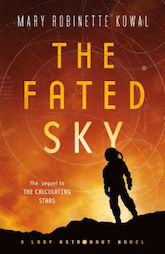

The Fated Sky
Also of note, the dia— I mean MAGS can only handle Number 1 and not Number 2.
My understanding is that you make dietary choices to make sure that you won’t have to Number 2 in the suit. At the NBL, they can pull you out of the pool. On the ISS? That’s a number 2 with no gravity to help it stay put.
So those are the top five things that I geeked about at the NBL. If you get me at a convention, I will talk about this AT LENGTH. “Probably won’t want to stay all day…” Ha!
The fact that Kjell thought I would probably find the NBL boring was a good example of how normal even extraordinary things can become when you deal with them every day. But, I mean… Space! Even simulated space! His normal is my astonishing. Seriously … look at how excited I got to talk about diap— MAGs. I’m excited to talk about MAGs.
(diapers)
Photos courtesy of the author.
Kowal’s The Calculating Stars and The Fated Sky are available from Tor Books.
Article originally published in July 2018.
Mary Robinette Kowal is the author of Ghost Talkers and The Glamourist Histories series of fantasy novels. She has received the Campbell Award for Best New Writer, three Hugo awards, and the RT Reviews award for Best Fantasy Novel. Her latest novels, The Calculating Stars and The Fated Sky, are set in the world of the Hugo Award-winning novelette, “The Lady Astronaut of Mars”. Mary, a professional puppeteer, also performs as a voice actor, recording fiction for authors such as Seanan McGuire, Cory Doctorow and John Scalzi. She lives in Chicago with her husband Rob and over a dozen manual typewriters.










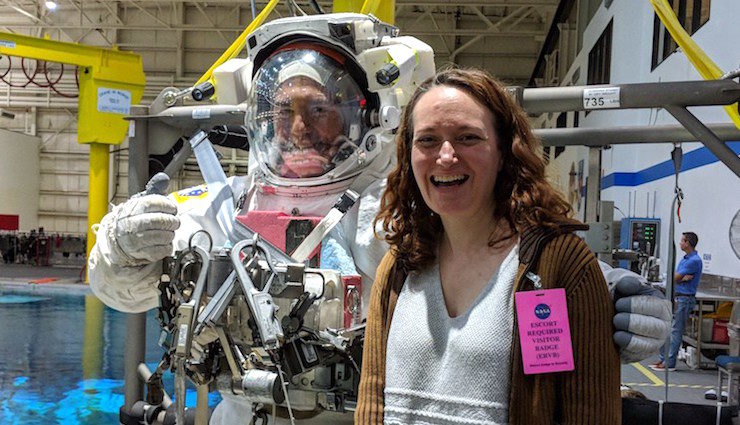
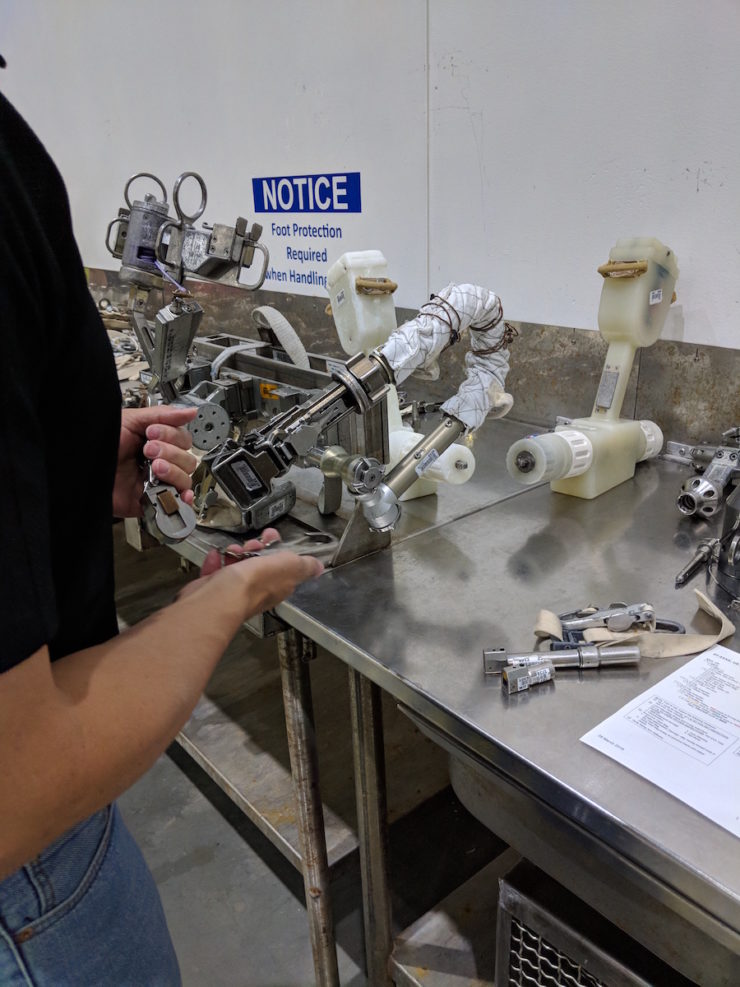
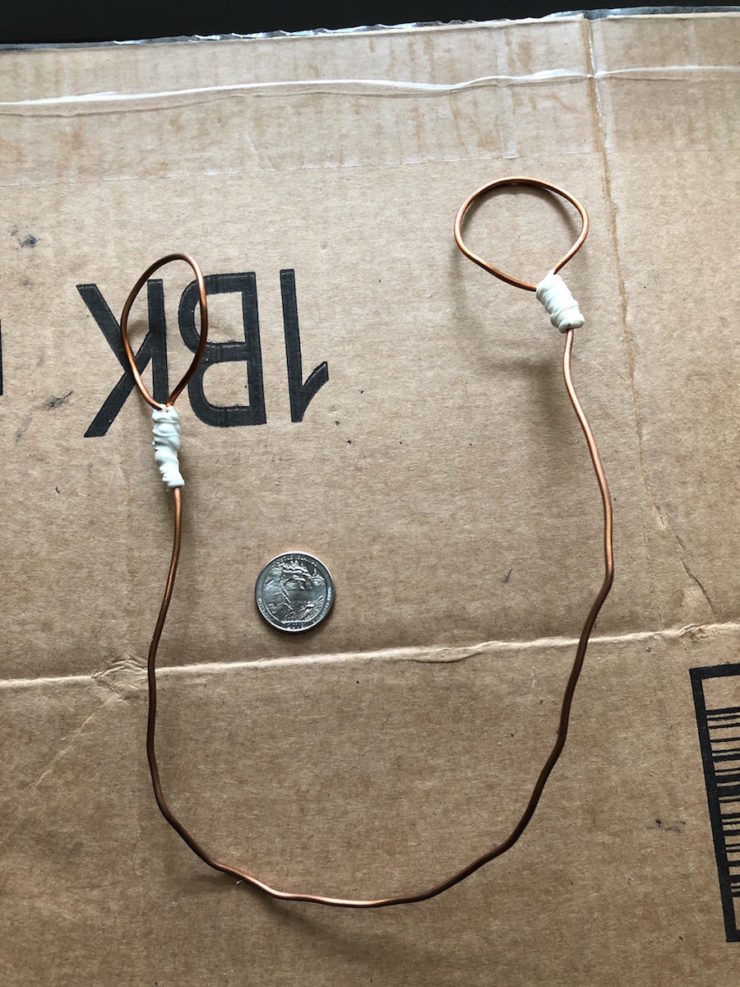
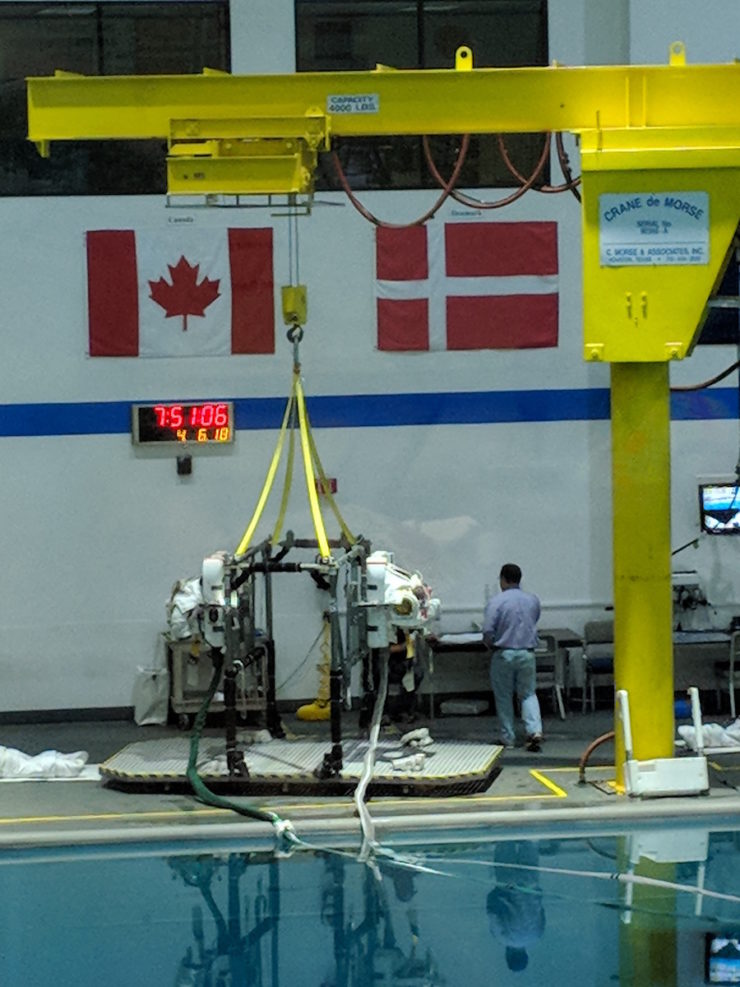
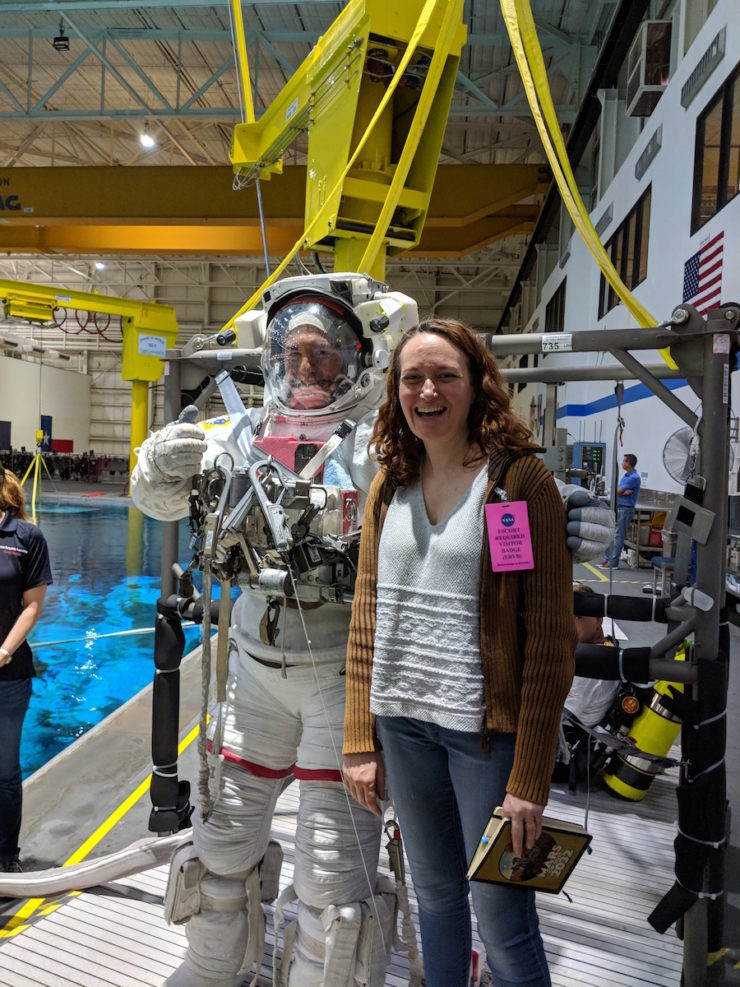
MRK is fiction’s answer to the non-fiction doyenne of bizarre and fascinating trivia, Mary Roach. Only even funnier. Thanks for the MAGs information, and the…indelible…image of a zero-G poopydiaper.